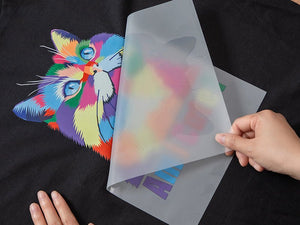Direct-To-Film (DTF) printing has gained popularity as a method for creating shirt graphics. It involves transferring designs onto a film, which is then applied to the fabric. While DTF printing offers advantages, it also has drawbacks. In this brief blog post, we explore the pros and cons of using DTF for shirt graphics.|
The Pros of DTF Printing
- Exceptional Print Quality: DTF printing produces vibrant, high-resolution designs, making it ideal for intricate patterns, detailed gradients, and even photographic prints.
- Versatile Fabric Compatibility: Whether it’s cotton, polyester, or blends, DTF performs exceptionally well, ensuring bold and durable designs on a variety of materials.
- Cost-Effective for Small Batches: With no need for extensive setup, DTF is a great option for small orders or one-off projects, offering professional-quality results without breaking the bank.
The Cons of DTF Printing
- Color Specificity: While DTF handles colors beautifully, specific shades or exact color-matching, and neon tones are not always possible.
- Durability Over Time: Like any print method, DTF designs may show minor cracking or fading with extended use, but they typically hold up well for 50-70 washes.
- Initial Texture: DTF prints may feel slightly smooth or plastic when new, but this softens naturally after a few washes for a more comfortable finish.
Conclusion: DTF printing offers excellent print resolution, fabric versatility, ease of application, and cost-effectiveness for small orders. However, there are limitations in color range, and durability. Understanding the pros and cons will help you decide if DTF printing aligns with your needs.

